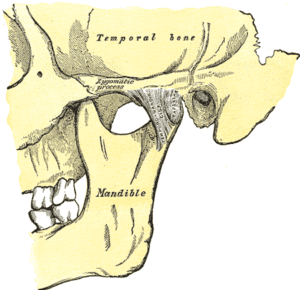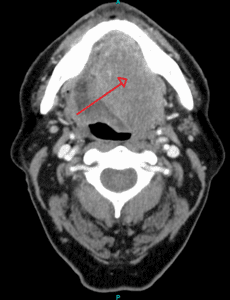During your initial visit and throughout your periodic check-up visits, Dr. Ross will screen for not only cavities and gum problems, but will also check for parafunctional habits (abnormal tooth wear and development), temporomandibular disorders (jaw joint issues), obstructive sleep apnea (airway obstructions), and oral cancer (abnormal tissue). When these abnormalities are diagnosed in their early stages, the treatment is usually less extensive and the prognosis (outlook) is generally better. If not treated, these conditions will likely get worse with time.
Parafunctional Habits
 Oral parafunctional habits are used to describe any abnormal behavior or functioning of the oral structures and associated muscles. There are a variety of behaviors included in this category, such as bruxism (grinding of the teeth, usually involuntarily), clenching, fingernail biting, non-nutritive sucking (thumb, finger or pacifier sucking), and excessive gum chewing, just to name a few.
Oral parafunctional habits are used to describe any abnormal behavior or functioning of the oral structures and associated muscles. There are a variety of behaviors included in this category, such as bruxism (grinding of the teeth, usually involuntarily), clenching, fingernail biting, non-nutritive sucking (thumb, finger or pacifier sucking), and excessive gum chewing, just to name a few.
Bruxism usually occurs while sleeping and most often the individual is unaware that they are even doing it. Bruxism can be caused by stress, anxiety, caffeine intake, the presence of sleep disorders (e.g. sleep apnea) or systemic diseases/disorders (e.g. acid reflux), and can be a side effect of medications (e.g. antidepressants). Bruxism can cause sleep disturbances, headaches, orofacial pain (mouth and face), mild to severe attrition of the teeth, tooth fractures, broken teeth and dental work (e.g. fillings, crowns), and recession of the gums.
Sucking on a thumb, finger, or pacifier as an infant that progresses towards toddler age can negatively impact the developing orofacial structures. It is recommended that non-nutritive sucking behaviors do not continue past the age of 3 years old. If they do, extra pressure from the object in the mouth against the developing teeth, gums, and roof of the mouth will likely result in the teeth (baby teeth and permanent) becoming improperly positioned, which will lead to other problems if not corrected, and can lead to airway problems in the future.
Temporomandibular Disorders (TMD)
 The temporomandibular joint (TMJ) is the point where your jaw articulates with your skull, which is located in front of the ears. When healthy, this joint allows the jaw to move up and down and side to side, so you can eat and talk normally. When you have problems using this joint, either because the muscles of the jaw that control it or because of a problem with the joint itself, then it is referred to as a temporomandibular disorder (TMD).
The temporomandibular joint (TMJ) is the point where your jaw articulates with your skull, which is located in front of the ears. When healthy, this joint allows the jaw to move up and down and side to side, so you can eat and talk normally. When you have problems using this joint, either because the muscles of the jaw that control it or because of a problem with the joint itself, then it is referred to as a temporomandibular disorder (TMD).
TMD can cause a variety of problems. It can cause pain or tenderness in the joints or muscles of the jaw, head, neck, and shoulders. When you try to open or close, the jaw may get stuck or locked into position. You may have problems chewing your food or notice that the upper and lower teeth do not fit together properly. You may experience swelling on the side of your face or notice clicking, popping, or grating sounds in the joint when you open and close your mouth or chew, which may or may not be painful.
Obstructive Sleep Apnea
 There are many types of upper airway obstructions. A common and serious upper airway obstruction occurs in the sleep disorder called obstructive sleep apnea in which one or more pauses in breathing or shallow breaths occur while you sleep. These pauses can last from a few seconds to minutes and can occur 30 times or more in an hour. Typically, normal breathing begins again, starting with a loud snort or choking sound.
There are many types of upper airway obstructions. A common and serious upper airway obstruction occurs in the sleep disorder called obstructive sleep apnea in which one or more pauses in breathing or shallow breaths occur while you sleep. These pauses can last from a few seconds to minutes and can occur 30 times or more in an hour. Typically, normal breathing begins again, starting with a loud snort or choking sound.
This type of apnea is caused by the relaxed tongue moving backwards at night when the individual is sleeping and results in a partial or complete blockage of the airway. One of the most common signs is a loud and ongoing snoring, which may pause and have choking or gasping sounds following the pauses. The snoring is usually loudest when sleeping on you back (compared to sleeping on your side), and does not have to occur every night. As a result, the quality of sleep is poor, which makes you tired during the day, and can make you feel irritable, depressed or have mood swings.
If this condition is untreated, it can lead to a number of problems:
• Increased risk of high blood pressure, heart attack or heart problems (e.g. arrhythmias), stroke, obesity, and diabetes
• Memory and learning problems; not being able to concentrate
• Morning headaches
• Dry mouth or sore throat when you wake up in the morning
• Waking up frequently during the night to urinate
• Erectile Dysfunction
In children, sleep apnea can cause hyperactivity, poor school performance, and an angry, hostile behavior. Children with sleep apnea often breathe through their mouths during the day instead of their nose. In small children who have enlarged tonsils, this may cause or contribute to the apnea.
Oral Cancer
 Oral cancers are part of a group of cancers commonly referred to as head and neck cancers. These cancers are more than twice as common in men as in women. On average, one person per hour dies from oral cancer in the United States.
Oral cancers are part of a group of cancers commonly referred to as head and neck cancers. These cancers are more than twice as common in men as in women. On average, one person per hour dies from oral cancer in the United States.
These cancers most often occur in the following sites:
- Tongue
- Tonsils and oropharynx (throat)
- Gums, floor of the mouth
- Lips, minor salivary glands in the roof of the mouth
The average age of most people diagnosed with these cancers is 62 years old, but it can also be found in young people. There has been a recent rise in cases of oropharyngeal cancer linked to infection with human papillomavirus (HPV). Genetics and risk factors (such as tobacco and alcohol) can increase the risk of developing cancer. Some people who develop cancer have no apparent risk factors or familial history of cancer (genetics).
Cancer starts when cells in the body begin to grow out of control, and with time they may spread to other areas of the body. Many types of tumors (abnormal growth of cells) can develop in the oral cavity. These fit into 3 categories:
- Benign or non-cancerous growths that do not spread to other parts of the body.
- Harmless growth that can later develop into cancer. These are known as pre-cancerous conditions, called dysplasia.
- Cancerous tumors, which can spread to other parts of the body (metastasize).
When abnormal tissue is identified, a biopsy is the only way to know for certain if the suspected tissue is cancerous, pre-cancerous or benign. For a biopsy, a sample of the abnormal tissue is removed and evaluated under a microscope. Sometimes other tests are needed before the biopsy to help determine if the tissue is cancerous or to help choose the best area for the biopsy.
A general rule is that any sore, discoloration, induration, prominent tissue, irritation, or hoarseness, which does not resolve within a two-week period on its own, with or without treatment, should be considered suspect, and warrants further examination for possible cancerous tissue.
